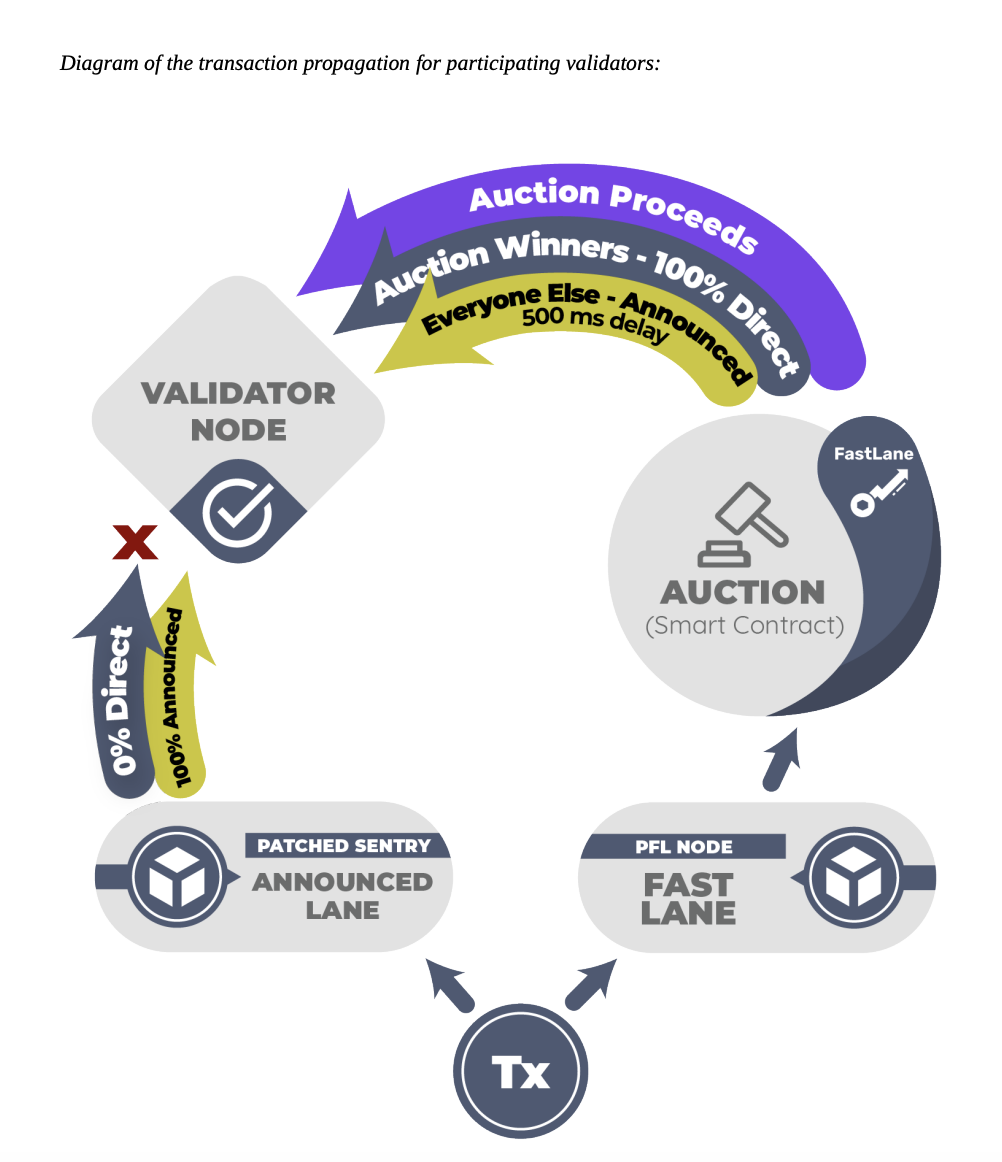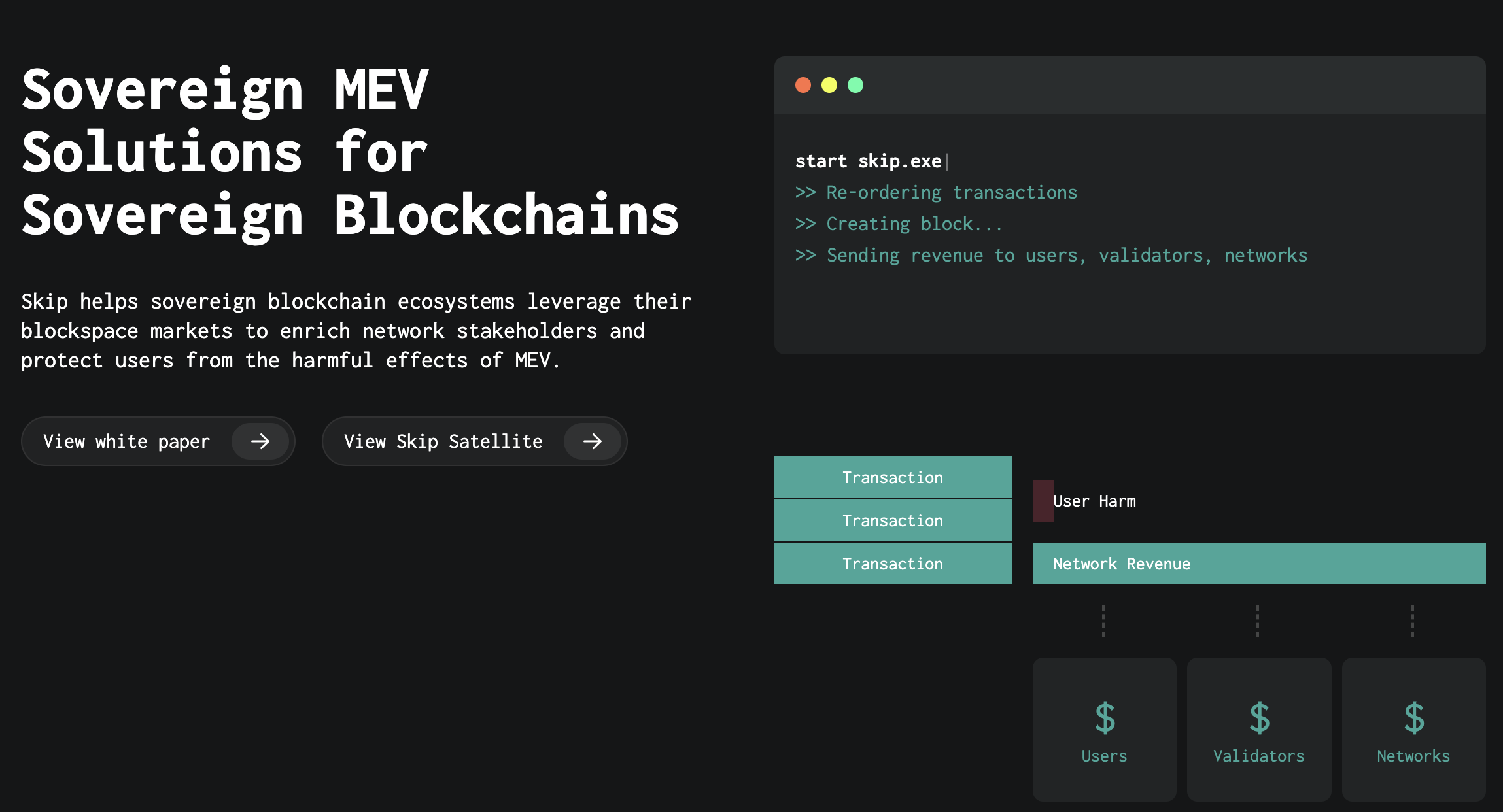
Preface
Tané is strongly interest in "Maximal Extractable Value (MEV)" as a key issue in blockchain, especially in Ethereum ecosystem.
We believe that since MEV is involved in all on-chain transactions, it is essential for each protocol to identify and extract it efficiently and fairly.
Tané recently co-hosted "MEV Day" event in Tokyo with Ethereum Japan. We plan to hold more events on MEVs and other important topics regularly, so if you are interested, please follow Tané and me on Twitter.
In this article, I will explain what MEV is, why it is essential, its history, and future developments.
(We assume that the audience for this article is beginners who have yet to become familiar with MEVs..)
TL;DR
- MEV is when value can be extracted by adding, deleting, or reordering transactions in a block in a blockchain.
- Why it is important, It is a critical issue for all protocols because MEVs compromise the following four points:
- 1. transparency and fairness
- 2. network security
- 3. transaction stability
- 4. user experience.
- Each blockchain should be sovereign in deciding whether MEVs are good or bad. (Sovereign Blockchain)
- Since each blockchain is working on measures to prevent MEVs, the opportunities for MEVs will decrease in the long run.
MEV Overview

MEV is described on the Ethereum website as follows
Maximal extractable value (MEV) refers to the maximum value that can be extracted from block production more than the standard block reward and gas fees by including, excluding, and changing the order of transactions in a block. 1
Chanlink's MEV description page explains it as follows.
MEV occurs when a block producer (such as a minor or validator) of a blockchain can extract value by arbitrarily changing, including, or excluding the order of transactions in a block, often to the detriment of the user. Simply put, block producers can determine the order in which transactions are processed on the blockchain and use that power to their advantage.
By the beginning of 2021, the cumulative value of MEVs extracted on Ethereum reached $78 million, jumping to $554 million by year-end. MEVs extracted on Ethereum now exceed $686 million. (as of May 2023) 2
This is a bit difficult to understand, so we have tried to come up with a simple explanation. To understand MEVs, you first need to understand a little bit about how cryptocurrencies work.
Cryptocurrencies have a shared "ledger" (blockchain) that everyone sees, which contains information such as who has how much money and who sent money from whom to whom.
This "ledger" is updated by people (called miners or validators) who can create new blocks by solving particular computational problems.
The person who creates a new block can then decide which transactions will be placed on that block.
MEV is the idea that more rewards can be earned by working out the order in which transactions are placed on a block.
For example, suppose you find a transaction where someone is trying to buy a large amount of a certain token. In that case, you can place your transaction to buy the same currency in front of it to raise the price and then place the original transaction to profit from the difference in currency prices.
Why is MEV important?
MEV is essential for the following reasons
- Fairness and Transparency: The blockchain technology has great value due to its transparency and fairness. However, MEVs allow some participants to benefit more unfairly than others. This contradicts the ideals of the blockchain and could undermine user trust.
- Network security: If MEVs are incentivized to generate profits, validators may take these profits. That can make the entire network less secure and increase the potential for attacks. For example, to maximize MEVs, a validator may split the chain without agreement. That is also known as a "time band attack" or "reorganization attack" and undermines the security of the blockchain.
- Transaction stability: MEVs can cause some transactions to be processed preferentially and others to be delayed. This can undermine the predictability and stability of the blockchain network.
- User Experience: The presence of MEVs allows some users to pay higher fees than others to have their transactions processed preferentially. This drives up fees and makes it difficult for the average user to use the system.
For these reasons, the MEV issue is an important concern for blockchain technology and its user community.
Since each blockchain has a different block generation mechanism, the magnitude of the MEV problem varies. In Ethereum, in particular, it is recognized as a significant problem.
History and Evolution of MEV
To understand the history and evolution of Maximum Extractable Value (MEV), it is necessary to look at it along with the development of blockchain technology and Ethereum.
MEVs received significant attention because of a paper published in April 2019 by researchers at Cornell University called "Flash Boys 2.0". (This paper was accepted by the IEEE Symposium on Security and Privacy 2020, a major conference.) 3
A book titled "Flash Boys: A Wall Street Revolt" discusses the existence of a profitable group that makes huge profits through high-frequency trading in the stock market with a 100% win rate.
Flash Boys 2.0 is a series of studies investigating how the principles of Flash Boys apply to the world of blockchain and crypto assets.
- Bitcoin and the Early Blockchains: While we sawa the early forms of MEVs with the beginning of blockchain technology, their impact was negligible. The first blockchain, Bitcoin, allowed miners to collect newly generated bitcoins (block rewards) and transaction fees. However, these opportunities were fairly available to all miners, and there was little opportunity to gain additional profit by manipulating the order of transactions in a block.
- Smart Contracts and Ethereum: With the advent of Ethereum, the MEV landscape has changed dramatically. Ethereum offers significantly more advanced smart contract capabilities than Bitcoin, which allows for programmable transactions and complex financial operations. This has allowed miners to discover new opportunities to profit from manipulating the order of transactions in a block. For example, by front-running ("front-running") trade with a price differential, miners could profit from the price fluctuations caused by subsequent trades.
- The rise of decentralized finance (DeFi): The explosive growth of DeFi further increased the importance of MEVs. Because DeFi's suite of transactions, including those from liquidity pools, loans, and yield farming, involve large dollar amounts, the sequence and timing of transactions can significantly impact their success and profitability. As a result, MEV extraction is a very lucrative business model for some miners and traders.
- Transition to Ethereum 2.0: The MEV landscape has also changed with the shift of Ethereum's consensus mechanism from proof-of-work (PoW) to proof-of-stake (PoS). While validators, like miners, may be able to manipulate the order of transactions and the content they contain, PoS and Proposer-Builder Separation (PBS) will change the MEV competitive landscape.
These factors combine to make MEVs a critical aspect of blockchain and cryptocurrencies: while MEV extraction provides financial rewards, it is also an important issue that impacts transaction fairness, blockchain security, and network health.
Types and Examples of MEVs
The world of MEV (Maximum Extractable Value) is broad and complex, and we can extract MEV in various ways through different strategies and technologies. Below we discuss some of the major types and specific examples of MEVs of particular interest. 4
- Front-running: This is the most common form of MEV. Front-running refers to observing another user's transaction, sending a similar transaction before that transaction, and profiting from it. For example, it refers to observing many buy orders coming in, placing a buy order first, and then selling at a higher price to gain a profit.
- Back-running: Back-running is the opposite of front-running and refers to observing other users' transactions and immediately sending a transaction. For example,
- Sandwich attack: This is a form of attack that combines both front-running and back-running. It inserts its own transaction before or after another user's transaction. This allows one to take advantage of the price difference between one's own buy transaction and the sell transaction to make a profit.
- Arbitrage: This form of MEV takes advantage of price differences between digital asset exchanges and DeFi protocols in different markets. For example, you can profit by buying an asset at a lower price on one exchange and selling the same asset at a higher price on another exchange.
- Time-bandit attack: This is a form of MEV in which a minor (or validator) rewrites a past block to create a new blockchain and profits by exploiting past transactions. However, this attack is costly and requires significant computing resources to succeed.
While these are some of the main MEVs types, new MEVs may emerge as the blockchain mechanism changes.
It is important to continually learn and understand how MEVs are extracted and their implications.
Good and Bad MEVs
There are arguments about whether some MEVs are good or bad.
A good MEV is when liquidation or arbitrage allows network transactions to proceed smoothly.
On the other hand, a bad MEV is when users do not have access to best execution (best price, transaction speed, transaction fees, etc.), then the MEV is bad for the users.
This argument has been interpreted differently by the Crypto community.
Flashbots, do not define good or bad. It may be similar to Ethereum's philosophy of leaving it up to the community and staying out of it themselves, and I understand that as long as they are following the rules, there is no good or bad.
Also, in Cosmos, the community and Skip, who works on MEV issues, have indicated that sandwich attacks are bad MEVs and will not tolerate them.
This discussion of whether MEVs are good or bad is an issue that each blockchain itself should have the sovereignty to decide, including how to extract MEVs, where to extract them, and how to distribute them.
MEV Solutions
There are projects for each blockchain that address the MEV issue.
Ethereum - Flashbots
Flashbots was founded at the end of 2020 by several research organizations and Ethereum developers. Their mission is as follows:
Our main focus is to achieve a Permissionless, Transparency and Sustainable Ecosystem for MEVs through three approaches.
・Illuminate: bring transparency to MEV activities.
・Democratize: Democratize access to MEV revenues.
・Distribute: Enable sustainable distribution of MEV revenues.
Flashbots has released several products and research, including MEV-Geth, MEV-Boost, Flashbots Protect, and Flashbots Data. The products, in particular, are used by many players. (MEV-Boost accounted for more than 90% of Slot Share).5
As for future focus, they have also announced a project called SUAVE (Single Unifying Auction for Value Expression) to address the decentralization of Block building.
It was also recently reported that they have raised $60M in funding at a valuation of $1B. 6
Charlie Noyes of Paradigm, the lead investor in that financing, stated That's how important the MEV issue is, and how important Flashbots is.
The future of MEVs is the future of crypto. We are proud to develop SUAVE and continue to support Flashbots in their mission to ensure transparency, efficiency, and fairness in cryptography.
Polygon - Fast Lane
An active player in Polygon's efforts to solve the MEV problem is Fast Lane. (Tané also invested in Fast Lane in its most recent funding round. 7)
In Polygon, user transactions are generated and broadcast via a p2p network. A specific node either receives the broadcast directly or via the p2p network.
Randomly, there is a 10% chance of direct transmission and a 90% chance of indirect transmission. Since direct transmission reaches the destination faster, searchers are trying to send a large number of transactions to get the 10% direct route because they want to transmit directly for the purpose of improving their profit.
FastLane has addressed this problem by eliminating randomness, removing the incentive to spam, and introducing off-chain auctions for searchers. Validators can generate additional revenue.
Approximately 23% of Polygon's total validators have already implemented FastLane's software.
FastLane has also announced a new product that aims to create a mechanism on Ethereum for Protocol to earn MEVs by Block Building internally 8
Cosmos - Skip Protocol

Skip Protocol is a protocol that aims to solve the MEV problem in Cosmos.
Skip has developed a product for the infrastructure of MEVs in Cosmos and is providing it to the Cosmos project.
We spoke with Skip's team and other projects at Gateway to Cocmos in Prague in June, and many Cosmos projects have adopted or are considering adopting Skip's products.
Skip has so far provided products such as Skip v1 (Skip Select), Skip v2 (POB), and API.
Skip Select:
Skip Select is a block space auction. (similar to MEV-Boost offered by Flashbots). It is a mechanism for capturing MEVs in the protocol in a Permissionless and fair manner through the auction of bundles (sets of transactions).
POB (Protocol-Owned Builder):
This is a mechanism that allows the protocol itself to acquire MEVs internally. Below is a description of the POB from Skip's github.
The Skip protocol's POB (Protocol-Owned Builder) is a set of Cosmos SDK and ABCI++ primitives that allow the application developer to build blocks on the chain in a transparent and enforceable manner, including giving the protocol full control over the recapture, control, and redistribution of MEVs, allowing the app provides the ability to define how blocks are built and verified on the chain.9
Future Development
We believe that the opportunities to acquire MEVs are likely to decrease compared to the current situation.
Currently, since each blockchain is in its developmental stage, many aspects that are not being addressed, and the opportunities to acquire MEVs are basically high.
However, it is in the direction of decreasing because as each blockchain's development progresses, it is believed that the MEV issue will also be addressed.
Also, important topics for each blockchain and each player include the following. We will discuss this at another time.
- ePBS, PEPC, Eigenlayer, Inclusionlist, MEV Smoothing, MEV Burn, etc.
- Decentralization of Block Building (SUAVE) by Flashbots
- POB (Protocol Owned Builder) by Skip
- Cross Domain MEV, L2 Shared Sequencer
Tané would like to talk with people, projects, investors and companies interested in this area. If you are interested or have a specific agenda, don't hesitate to get in touch with us here.
Notes:
- MAXIMAL EXTRACTABLE VALUE (MEV)
- What Is Maximal Extractable Value (MEV)? by Chainlink
- Flashboys2.0
- zero mev 「toxic mev」
- MEV-Boost Dashboard
- Flashbots becomes unicorn after completing $60 million raise
- Multicoin Leads $2.3M FastLane VC Deal, Continuing Its Bet on MEV Infrastructure
- Atlas
- skip-mev/pob
Disclaimer: This post is for general information purposes only. It does not constitute investment advice or a recommendation or solicitation to buy or sell any investment. It should not be used to evaluate the merits of making any investment decision. It should not be relied upon for accounting, legal or tax advice or investment recommendations. This post reflects the current opinions of the authors. It is not made on behalf of Tané or its affiliates and does not necessarily reflect the opinions of Tané, its affiliates or individuals associated with Tané. The opinions reflected herein are subject to change without being updated.